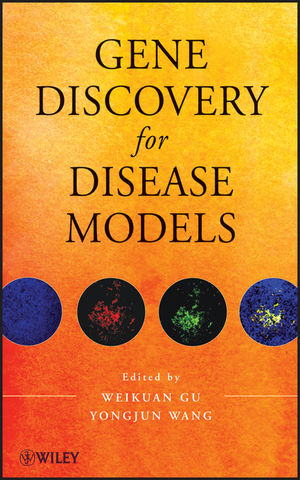
Gene Discovery for Disease Models
John Wiley & Sons Inc (Verlag)
978-0-470-49946-7 (ISBN)
Weikuan Gu received his PhD from Cornell University in 1994 and joined the University of Tennessee Health Science Center as an assistant professor in 2002. Dr. Gu's lab has developed an integrated strategy for the positional cloning of genes, a strategy which has been successfully applied to clone several genes from spontaneous mouse mutations. Yongjun Wang received his MD from Hebei Medical College in 1982 and his MBA from Peking University in 2004. Dr. Wang joined Beijing Tiantan Hospital in 2000 and now serves as the vice president of the hospital.
Preface. Acknowledgments.
Contributors.
1. Gene Discovery: From Positional Cloning to Genomic Cloning (Weikuan Gu and Daniel Goldowitz).
2. High-Throughput Gene Expression Analysis and the Identification of Expression QTLs (Rudi Alberts and Klaus Schughart).
3. DNA Methylation in the Pathogenesis of Autoimmunity (Xueqing Xu, Ping Yang, Zhang Shu, Yun Bai, and Cong-Yi Wang).
4. Cell-Based Analysis with Microfl uidic Chip (Wang Qi and Zhao Long).
5. Missing Dimension: Protein Turnover Rate Measurement in Gene Discovery (Gary Guishan Xiao).
6. Bioinformatics Tools for Gene Function Prediction (Yan Cui).
7. Determination of Genomic Locations of Target Genetic Loci (Bo Chang).
8. Mutation Discovery Using High-Throughput Mutation Screening Technology (Kai Li, Hanlin Gao, Hong-Guang Xie, Wanping Sun, and Jia Zhang).
9. Candidate Screening through Gene Expression Profile (Michal Korostynski).
10. Candidate Screening through High-Density SNP Array (Ching-Wan Lam and Kin-Chong Lau).
11. Gene Discovery by Direct Genome Sequencing (Kunal Ray, Arijit Mukhopadhyay, and Mainak Sengupta).
12. Candidate Screening through Bioinformatics Tools (Song Wu and Wei Zhao).
13. Using an Integrative Strategy to Identify Mutations (Yan Jiao and Weikuan Gu).
14. Determination of the Function of a Mutation (Bouchra Edderkaoui).
15. Confi rmation of a Mutation by Multiple Molecular Approaches (Hector Martinez-Valdez and Blanca Ortiz-Quintero).
16. Confi rmation of a Mutation by MicroRNA (Hongwei Zheng and Yongjun Wang).
17. Confi rmation of Gene Function Using Translational Approaches (Caroline J. Zeiss).
18. Confi rmation of Single Nucleotide Mutations (Jochen Graw).
19. Initial Identifi cation and Confi rmation of a QTL Gene (David C. Airey and Chun Li).
20. Gene Discovery of Crop Disease in the Postgenome Era (Yulin Jia).
21. Impact of Genomewide Structural Variation on Gene Discovery (Lisenka E.L.M. Vissers and Joris A. Veltman).
22. Impact of Whole Genome Protein Analysis on Gene Discovery of Disease Models (Sheng Zhang, Yong Yang, and Theodore W. Thannhauser).
Index.
| Verlagsort | New York |
|---|---|
| Sprache | englisch |
| Maße | 165 x 241 mm |
| Gewicht | 984 g |
| Themenwelt | Studium ► 2. Studienabschnitt (Klinik) ► Humangenetik |
| Naturwissenschaften ► Biologie | |
| Naturwissenschaften ► Chemie ► Organische Chemie | |
| Technik ► Umwelttechnik / Biotechnologie | |
| ISBN-10 | 0-470-49946-X / 047049946X |
| ISBN-13 | 978-0-470-49946-7 / 9780470499467 |
| Zustand | Neuware |
| Haben Sie eine Frage zum Produkt? |
aus dem Bereich


